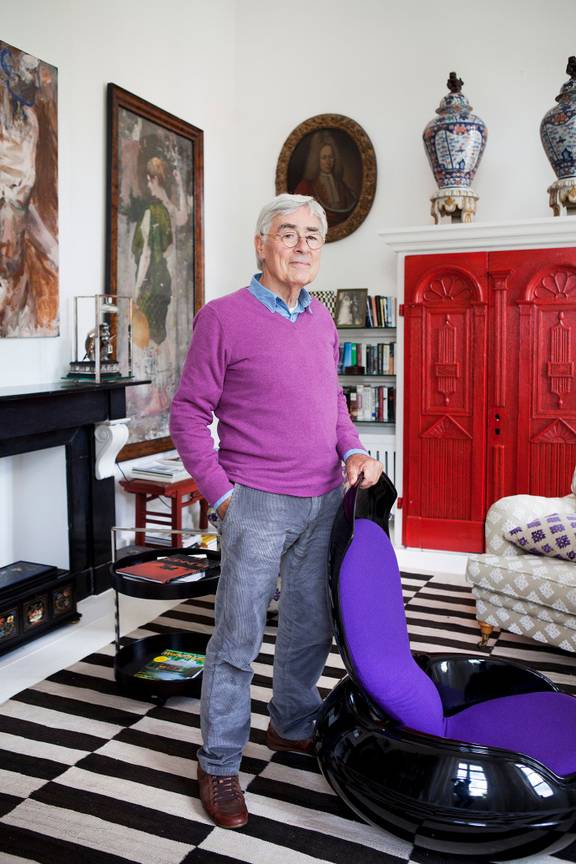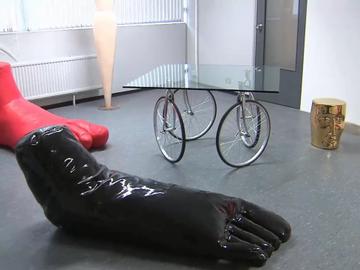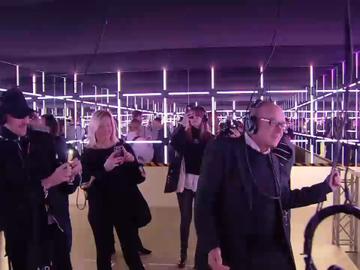Exactly fifty years ago, Peter Ghyczy designed his iconic Garden Egg Chair. The design has since become part of the permanent exhibitions at the Museum of Modern Art in New York, the Victoria & Albert Museum in London, and the ADAM in Brussels.

© Lydie Nesvadba
| Ghyczy next to his Garden Egg Chair: “Yes, it is a little bit like a mussel.”
Peter Ghyczy: 'It is terrible that people throw out their furniture so quickly'
Surveying Peter Ghyczy’s oeuvre, it soon becomes clear that the Garden Egg Chair is an exception. That is largely due to the 1973 oil crisis.
“In the late 1960s, people thought plastic was the be all and end all, but the crisis suddenly changed all that. Synthetic materials are made with oil, and people lost interest when the crisis made the prices sky-rocket."
"As a result, the Design Center of Elastogran, where I was employed, stopped production and closed down. But because the Garden Egg Chair was already in production and was regularly featured at design fairs, it eventually became an icon of East-German design,” Ghyczy tells us.
“Although it had first been designed in West-Germany, the production was controlled by an East-German company, the VEB Synthesewerk Schwarzheide. The majority of the manufacturing thus officially had to stay in East-Germany, even though the price tag made that unrealistic.”
My garden furniture was a response to the terrible weather in our part of the world
The origins of the Garden Egg Chair lie in the ambition of the synthetic materials manufacturer Elastogran to showcase the qualities of their new material polyurethane.
“There was an enormous urge for change, and futuristic designs and optimistic colours invigorated that new lifestyle. My garden furniture was a response to the terrible weather in our part of the world. Because you could close the chair, you didn’t have to run outside every time it rained to bring the cushions in,” Ghyczy explains.
“I had originally envisaged a spherical shape, but it was too big. Through sketches and plaster models, I eventually ended up with a kind of squashed egg. I then designed a hinge for the door of the shell and conducted extensive tests to get the exact position of the backrest right."
"Given that I worked for a synthetic materials manufacturer and not a furniture company, I was able to push my experiments much further. For example, we managed to reduce the thickness of the shell from four to two centimetres, so that the different parts fit together much better. It is a little bit like a mussel.”
Glass and metal
The designer, who is originally from Hungary, used the crisis as an opportunity to move from Germany to the Netherlands, where he founded his own company. He exchanged synthetics for glass, metal, and wood, and his organic design for more geometrical shapes.
“As an architect I pay close attention to technical details like the connections between different materials. For example, for my T04 table, I designed a system to jam glass between metal. That is one of my 68 designs that we still currently produce. I think it is absolutely terrible that people throw their furniture out so quickly, so I try to make timeless designs with honest, solid materials,” Ghyczy says.
“I still make designs, but my son took over the business side of the company in the late 1990s. Thanks to him, the Garden Egg Chair is back on the market, albeit it in a kind of refined polystyrene and with new colour combinations.”
> Peter Ghyczy. 50 Years of Functionalism. 7/2 > 11/3, ADAM, Laken/Laeken
Read more about: Laken , Expo , Peter Ghyczy , ADAM




Fijn dat je wil reageren. Wie reageert, gaat akkoord met onze huisregels. Hoe reageren via Disqus? Een woordje uitleg.